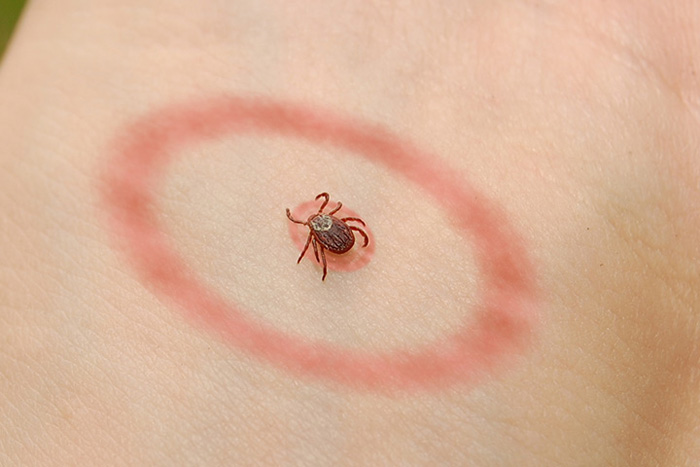
Lyme borreliosis (LB) is a complex, multisystem disease caused by the spirochete Borrelia burgdorferi, which is transmitted to humans by the bite of an infected ixodid tick. Lyme disease (LD), the syndrome occurring early in the course, is characterized by erythema migrans (EM), a local infection at the site of the tick bite. If untreated, the infection disseminates hematogenously to many different sites. Late Lyme borreliosis may manifest as involvement of the joints, nervous system, and/or heart. Chronic cutaneous LB is manifested by acrodermatitis chronica atrophicans.
Causes of Lyme Borreliosis
After inoculation into the skin as the tick feeds, spirochetes replicate and migrate outward, producing the EM lesion, and invade vessels, spreading hematogenously to other organs. The spirochete has a particular trophism for tissues of the skin, nervous system, and joints. The organism persists in affected tissues during all stages of the illness. The immune response to the spirochete dovelops gradually. Specific IgM antibody peak between the third and sixth weeks after disease onset. The specific IgG response develops gradually over months. Proinflammatory cytokines, tumor necrosis factor-α, and interleukin 1 β are produced m affected tissues.
Symptoms of Lyme Borreliosis
- Bull’s eye rash after a tick bit
- Rashes that are homogeneously red are seen more frequently
The symptoms of Lyme disease are fever, malaise, fatigue, headache, muscle and joint aches in large joints, sore throat, sinus infection
Diagnosis
CDC surveillance criteria:
Early LB Made on characteristic clinical findings in a person living in or having visited an endemic area; does not require laboratory confirmation.
Late LB Confirmed by specific serologic tests.
ACA Made on clinical findings confirmed by lesional biopsy.
Treatment
Prophylaxis
- Avoid known tick habitats. Other preventive measures include wearing long pants and long-sleeved shirts, tucking pants into socks.
- Apply tick repellents containing N, N-diethyl-m-toluamide (“DEET”) to clothing and/or exposed skin.
- Check regularly for ticks, and promptly remove any attached ticks.
- Acaracides containing permethrin kill ticks on contact and can provide further protection when applied to clothing.
- After a recognized tick bite, the risk of infection with B. burgdorferi is low, and antibiotic prophylaxis is not routinely indicated. Therapy with amoxicillin or doxycycline for 10 days may be given to prevent Lyme disease in the following circumstances:
Tick engorged (feeding for >24 h)
Ixodes nymph from a hyperendemic area
Pregnancy
Immunocompromised status
Follow-up difficult
Patient anxious
Immunization
Immunization for prophylaxis of LB is now available for those at high risk of infection with the Lyme vaccine LYMErixTM. It contains recombinant outer-surface protein A.
References